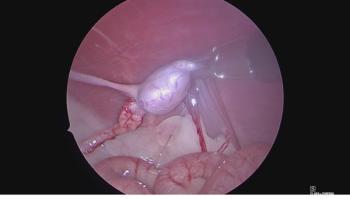
|Articles|October 1, 2011
Diabetes in cats, part 2--other important aspects of control
Author(s)Gary D. Norsworthy, DVM, DABVP
The Urgency Principle is the basis for our ability to do a one month drug trial with hypoglycemic agents and the basis for my approach to gradual regulation.
Advertisement
Glucose curves
- JAVMA: Feb. 1, 2003
- Glucose curves on diabetic dogs
- Sequential curves: All diabetic dogs (regulated and not well regulated)
- 27%: opposite dosing recommendation on Day 2 vs. Day 1.
- 17%: different but not opposite recommendation on Day 2 vs. Day 1.
- 57% consistent.
- Sequential curves: Regulated
- 40%: opposite dosing recommendations on Day 2 vs. Day 1.
- 25%: different but not opposite recommendation Day 2 vs. Day 1.
- 35% consistent.
- JAVMA: April 1, 2007
- Sequential curves performed at home (twice) and at a veterinary clinic
- High variation in nadir, time to nadir, maximum bG values, mean bG values.
- No difference in home and clinic results.
- Paired home curves in agreement 43% of the time (6 of 14).
- Five Minute Veterinary Consult: 3rd and 4th Editions
- “Glucose curve – not helpful in cats.”
Principles of successful diabetic management
- #1: Establish a realistic goal of therapy
- Maintain bG levels between 100 and 300 (5.5 and 16.5) throughout the day.
- Achieve remission.
- Resolve clinical signs.
- Feldman & Nelson's endocrinology book, 1996: “Glycemic control is attained when clinical signs of diabetes have resolved, the cat is healthy and interactive in the home, its body weight is stable, the owner is satisfied with the progress of therapy, and, if possible, the blood glucose concentrations ranges between 100 and 300 mg/dl throughout the day.”
- #2: Hyperglycemia is always better than hypoglycemia.
- #3: Urgency Principle
- As long as the cat is not ketoacidotic, it is not on death's door.
- Feldman & Nelson's endocrinology book, 1987: “We have seen diagnosed diabetic dogs and cats continue rather normal existences for 6 to 24 months without any therapy.
- The Urgency Principle is the basis for our ability to do a one month drug trial with hypoglycemic agents and the basis for my approach to gradual regulation.
- #4: Consistency Principle
- The more things we can keep the same from one day to the next, the easier it is to keep a diabetic cat regulated.
Four steps in treating a diabetic cat
- #1: Client Education
- Clients need to know
- Implications to the cat.
- Implications to the owner.
- The importance of consistency.
- Hyperglycemia is always better.
- Dysregulation will occur.
- Spontaneous remission occurs.
Advertisement
- Hypoglycemia: clinical signs, when it occurs, what to do.
- Insulin: how and when to give; when to give less.
- Food to feed and the feeding schedule.
- Home monitoring.
- When to return for rechecks.
- Robert Levoy: “The degree of communication is inversely proportional to the degree of stress.”
- http://www.norsworthydownloads.keepandshare.com
- #2: Test for and treat other pancreatic diseases
- Chronic pancreatitis – common.
- No outward clinical signs.
- The inflammation affects beta cell function and insulin production.
- Present in about 50% of newly diagnosed diabetics based on elevated fPLI values.
- fPLI: IDEXX (one day turnaround) or Texas A&M GI Lab (979-862-2861)
- 6-12 hour fasted sample; no lipemia or hemolysis.
- Treatment options
- Digestive enzymes (Viokase or equivalent)
- To created negative feedback to pancreas and reduce/stop enzyme production.
- Not a very effective approach.
- SAMe (Denosyl or Denamarin by Nutramax) PLUS
- Steroids: prednisolone @ 5 mg q24h PO
- Use both drugs for 4-8 weeks then recheck the fPLI.
- If it is not significantly reduced, continue both drugs for another 4-8 weeks then recheck the fPLI.
- If it is ¸5.4, discontinue Denosyl/Denamarin and continue prednisolone for another month then stop it.
- Some cats never achieve normal values, but if their diabetes is well controlled, either discontinue prednisolone and Denosyl/Denamarin or continue just prednisolone.
- Exocrine pancreatic insufficiency – rare.
- Produces soft, tan stools and weight loss/polyphagia
- fTLI: Texas A&M GI lab only; also request cobalamin level.
- Treatment options
- Digestive enzymes (Viokase or equivalent)
- To created negative feedback to pancreas and reduce/stop enzyme production.
- Not a very effective approach.
- #3: Treat other infections
- Culture urine.
- JVIM July 2006
- 13% of all 141 diabetics had a positive urine culture
- 11% of newly diagnosed diabetics had a positive urine culture.
- Treat periodontal disease
- If needed, clean the teeth as soon as the cat is stable.
- If is do not find infections, I treat for 1-2 weeks with an antibiotic.
- #4: Diet
- High fiber diets have some benefit, but they are very high in carbohydrates.
- Ultra low carbohydrate diets.
- Canned products are better in general.
- Canned DM (Purina) is 8.1% carbs; canned m/d is 15% carbs (not UL).
- Contraindicated for
- Obesity in non-diabetic cats.
- Renal disease
- Strongly acidifies the urine.
- High protein = high phosphorus.
- History of calcium oxalate uroliths.
- Idiopathic hypercalcemia
- OM (Purina) has high fiber and lower carbohydrates.
- For obese diabetics or multicat households.
- Dry vs. Canned
- Higher remission rate, longer remission period, and better control with all canned diet.
- When I prefer dry low carb diets
- When the cat won't eat canned food.
- When the owner won't feed canned food.
- When the cat insists on eating frequently.
- When the cat is on a dry food and is well regulated.
- For dry food eaters, I usually begin with dry food and change to canned food if regulation becomes a problem.
- #5: Insulin
Keys to successful management of the diabetic cat
- Educate your client. Norsworthy Client Handout: www.norsworthydownloads.keepandshare.com
- Click “Documents and Files.” Click “Diabetes Client Handout.”
- Don't get in a hurry.
- Treat other diseases.
- Chronic pancreatitis
- Periodontal disease
- Bacterial cystitis and other bacterial infections
- Feed canned DM, if possible.
- If not, try low carb Fancy Feast products (see list below) or download at www.norsworthydownloads.keepandshare.com
- Use ProZinc.
- Look at the cat – not just numbers.
- Shoot for a 12 hour bG to be 300-350 mg/dl
- Don't panic when the bG is in the 400's.
- Don't panic when the bG is in the 50's (but reduce the dose of insulin or stop it).
- TREAT CATS, NOT NUMBERS!
Newsletter
From exam room tips to practice management insights, get trusted veterinary news delivered straight to your inbox—subscribe to dvm360.
Advertisement
Advertisement
Advertisement




